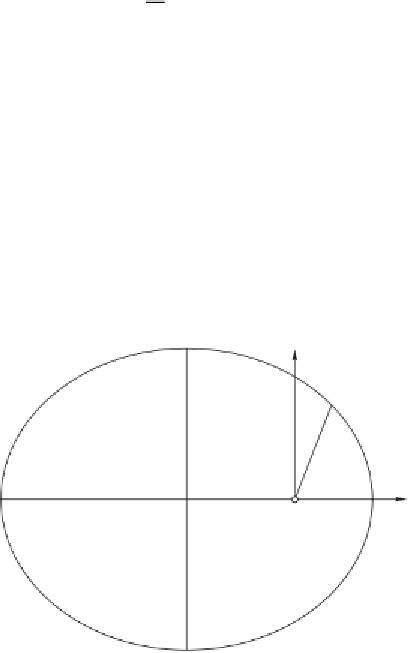Geoscience Reference
In-Depth Information
the node, but in conformity with astronomical terminology it is the right
ascension of the (ascending) node. The major axis of the orbit intersects the
orbital ellipse at the perigee
P
, the position where the satellite is closest to
the earth, and at the apogee
A
, where the satellite is farthest away. The
angle
ω
between the nodes and the major axis is the argument of perigee.
The angular distance of the satellite
S
from perigee is called
true anomaly
and denoted by
v
; it is a function of time. Note that this strange name comes
from the history of astronomy; there is nothing anomalous with it!
The equation of the orbital ellipse may be written
p
1+
e
cos
v
,
r
=
(7-5)
where
r
is the distance of the satellite from the earth's center of mass and
p
=
b
2
a
e
2
)
=
a
(1
−
(7-6)
is the length of the radius vector
r
for
v
=90
◦
. The radius vector
r
and
thetrueanomaly
v
form a pair of polar coordinates in the orbital plane,
and (7-5) is the well-known polar equation of an ellipse. See Fig. 7.3 for an
illustration of these quantities, where
F
, the focal point, is the earth's center
of mass.
According to
Kepler's second law
, the area of the elliptical sector swept by
the radius vector
r
between any two positions of the satellite is proportional
to the time it takes the satellite to pass from one position to the other. In
other words, the time rate of change of the area swept by the radius vector
is constant. Since the element of area of a sector in polar coordinates
r
and
e
2
S
b
p
r
ae
À
A
P
a
r
0
e
1
F
Fig. 7.3. Orbital ellipse




